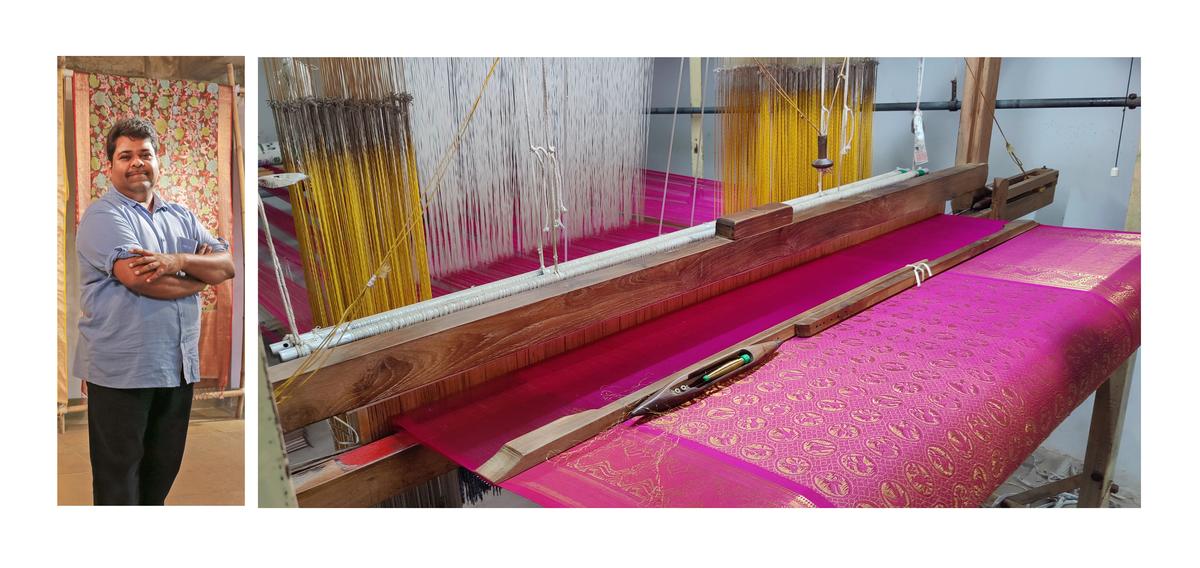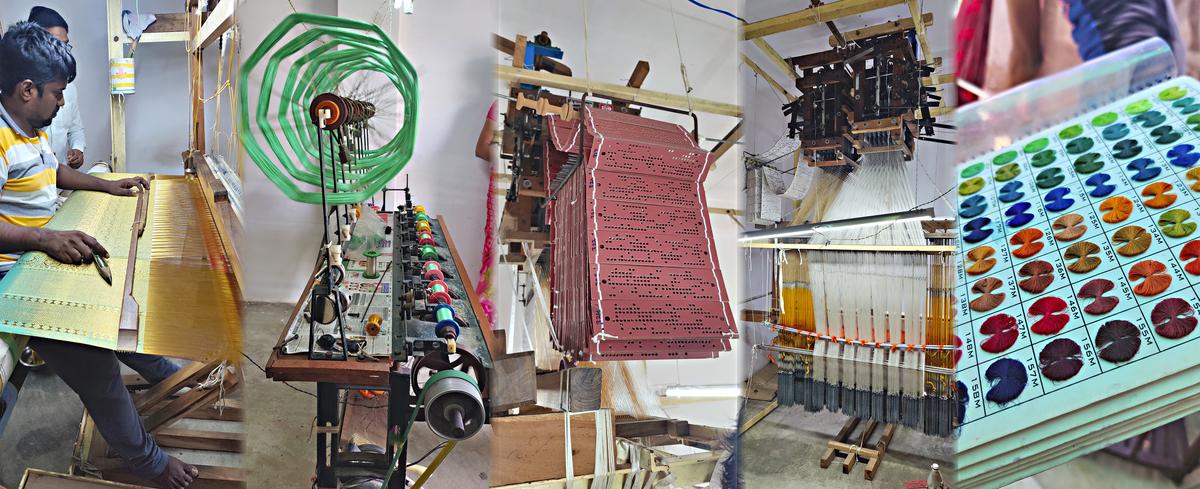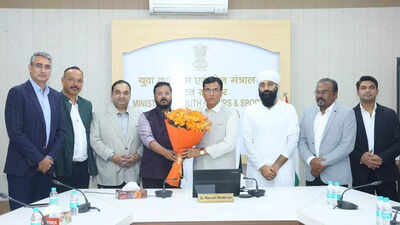
A weaver at work at a Kanjeevaram weaving unit established by textile designer Gaurang Shah in Hyderabad
| Photo Credit: Sangeetha Devi Dundoo
The steady, rhythmic rattle of the looms is audible as we enter a house in Injapuram, on the outskirts of Hyderabad. Brothers Yadagiri and Nagaraj, who were earlier part of the Gadwal silk weaving community at Amangal, Ranga Reddy district, in Telangana, now oversee the 12-loom Kanjeevaram unit in Injapuram, established by Hyderabad-based textile designer Gaurang Shah.
There is a steady output of premium handwoven Kanjeevaram saris from these looms, with some of them reviving heritage designs and colours. Gaurang had initially collaborated with weavers in Kanchipuram, Tamil Nadu, but it required frequent travelling to oversee the weaving process. “There was also the risk of designs being plagiarised or our supply of pure silver and gold zari threads being replaced with non-genuine material,” he explains. When the erstwhile Gadwal weavers from Amangal expressed interest in working on Kanjeevaram saris, it turned out to be a win-win situation for the weavers and the designer.
“The weaving process is not very different for Gadwal and Kanchi silk saris,” says Gaurang. While a few weavers who knew the basics of Gadwal weaving joined the team, others with no prior weaving experience were trained.

Inspired by temple sculptures
On these looms, Gaurang is on a mission to revive some of the traditional designs inspired by sculptures in the temples of Tamil Nadu. For instance, he shows a design sheet that features a procession of elephants and has motifs of chakras, temple pillars and animal figures. “Some of the old sculptures we came across had designs that fuse the body of one animal with the head of another. We have tried to bring back such designs,” he explains.

Gaurang Shah; a Kanjeevaram sari on the loom | Photo Credit: Sangeetha Devi Dundoo
Designs are hand drawn, then computerised to be transferred or punched on cards. The punched cards, with holes, are used in the jacquard on the looms. This mechanised transfer of designs on the jacquard looms allows complex patterns to be woven with ease.
The warping process, which used to be done by hand in the early years, is now mechanised. The weft yarn is then transferred to the bobbins with the help of charkhas. A spindle fill the weft yarns into bobbins for the shuttles. In these looms, simple weights such as water bottles filled with sand help maintain the tension of the warp.
Gaurang explains how the Kanchi saris are known for their contrasting borders that differ from the body of the sari. He shows a sari and explains, “The warp is pure gold zari while the weft is blue.” At the other end of the loom, yarn in the traditional ‘arakku’ colour (a deep pink-red hue)is awaiting the loom process.
Yarn to sari, under one roof

Yarn processing, jacquard and shade card
| Photo Credit:
Special Arrangement
On the terrace of the spacious house, dyers mix dyes to match the shade selected from a shade card. They dip the yarn in boiling water and then mix in the colour before it is dipped again. Yadagiri explains, “Since the silk yarn is procured locally and everything from the warping to the dyeing and weaving process is done in-house, we have a control over the quality.”
On average, the weavers manage to complete three silk saris a month. Yadagiri says production slows down during peak monsoon since damp weather is not conducive to the Kanchi weaving process. The price of saris woven here ranges from ₹50,000 to ₹5 lakh or more, depending on the intricacies of the design and the zari. “I pay weavers ₹30,000 to weave a single shuttle sari which takes nearly 12 days, and ₹45,000 to ₹50,000 for a three-shuttle sari which takes 25 days,” says Gaurang.
The Injapuram Kanchi weaving facility was established three years ago and the designer hopes to expand it to 20 looms, depending on how soon he can get more new weavers to join the group.
(Read related story on Srikakulam looms on www.thehindu.com. The writer visited these looms on invitation)





